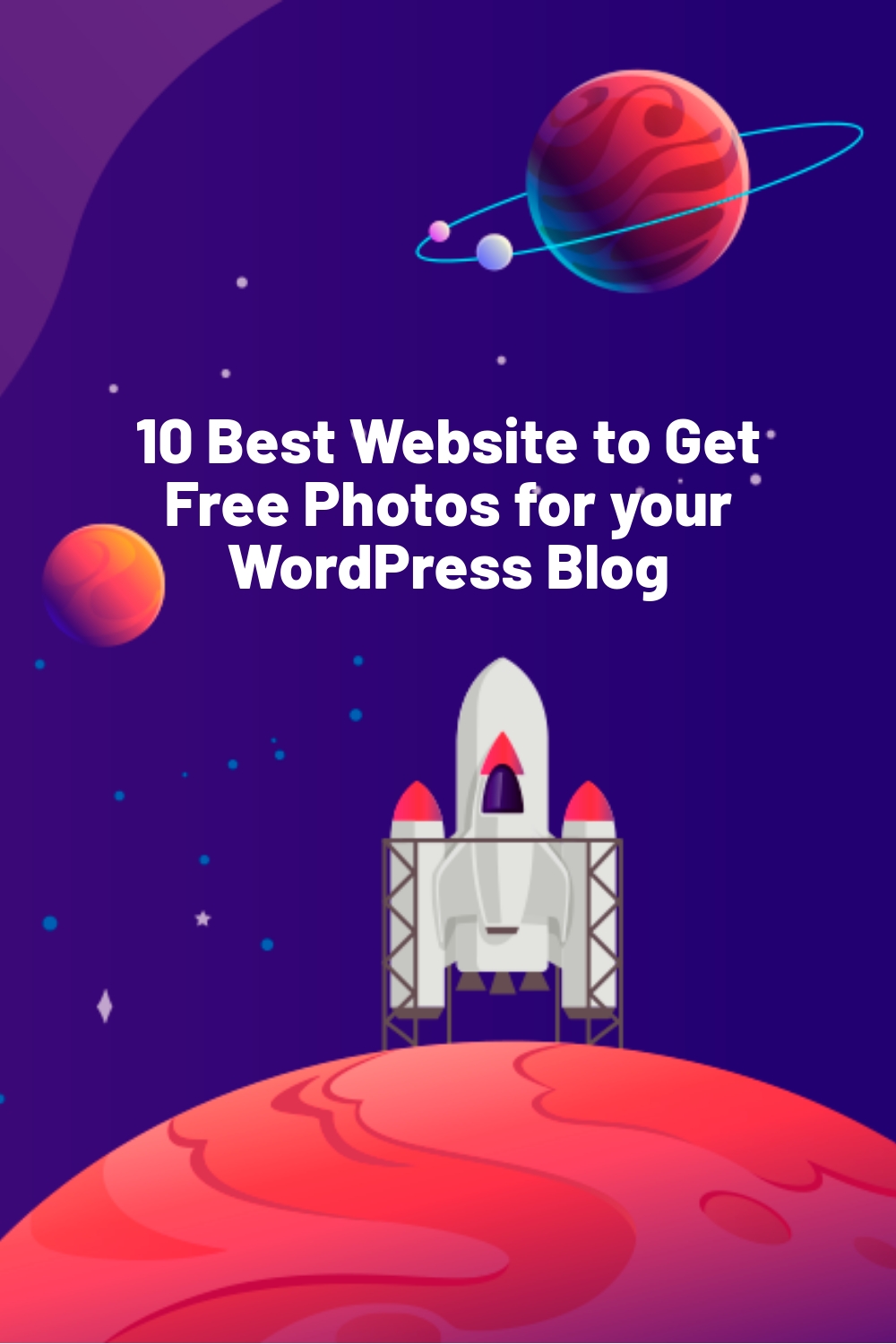You decided to make your very first WordPress blog. Now what?
Most experts suggest using photos in blog posts to make them more attractive to readers. It increases credibility and authority, and overall interaction with your content.
A powerful image zaps right into your readers’ minds’ first bits and obtains them in the mood you desire. The photo can either develop a seeming paradox with the heading or unexpectedly magnify the headline. Using photos can be a beneficial tool while you’re writing.
According to some studies, out of the millions of WordPress posts, articles with photos receive 90% more views on average and found out that the best-performing posts had one image per 350 words.
If you are unable to make your photo for any reason, there are numerous stock photo websites from which you can obtain pictures. You cannot, however, use any image you find on the Internet.
You can’t just open Google Image Search and start picking pictures at random. This article focuses on the best free and legal image sources for your WordPress blog posts.
Tips on how to find photos for your blogs
Plainly, web content alone isn’t the golden goose for your advertising. The actual value depends on top-quality web content that’s enhanced with pictures. Your obstacle, then, is to understand what kind of photos work best, where to discover them, and exactly how to utilize them appropriately.
You can also narrow your search using the on-site filters that numerous sites provide to choose pictures relevant to your key phrases, specifically intriguing or recently posted. This can help you avoid the cardinal sin of using an image that’s already strongly related to someone else’s material or brand name.
Whether you find it on Google, on social media, or on a stock photo site, every image belongs to someone else, and you need permission from the photographer. The same thing goes for illustrations. These images are licensed and should not be used without the consent of the owner.
But then how do you know if an image is copyrighted?
Copyright is the legal right of intellectual property. This may include writing, music, film, design, photography, and more.
Article Continues Below
It is sometimes difficult to find out what you can and cannot use on the Internet. The consequences of copyright infringements (even accidentally) are serious.
A few ways to determine if the image is copyrighted include identifying the copyright symbol next to the image or seeing a watermark over the image.
Copyright and Licensing
When we tend to produce something, we own the copyright. This is our privilege as the creator of this work. We can manage who else is going to use our work and in what way. For example, I could allow someone to print my photograph or adapt it to an excellent piece of art. Instead of establishing verbal agreements, I can distribute my work with a license that sets out the rules for use. Proprietary items are typically identified as “intellectual property.”
You can not copyright an idea. Someone can head out and also take the same image as you, but they can’t take your picture and even claim it as their own, customize it or market it unless you authorize them, of course.
Licenses are given by an authority to permit usage. The property owner may decide to provide his photo completely free or bill a rate; in any case, he can use a certificate to restrict the use and keep the copyright. Even if someone pays cash doesn’t imply they have complete control or civil liberties to what they’re getting. Licenses can determine the number of uses, the bounds of use, and the length of time until the license expires.
In this regard, digital technology has a significant impact on the territorial and temporal framework for copyright licensing. Also, several new licensing practices are emerging in the new technological environment.
Copyright laws are incredibly complex, but it should be a good start.
Exclusive rights of copyright
A significant perk of copyright is that it gives the maker of an original work complete control over its usage and circulation. The Copyright Act grants five civil liberties to a copyright owner:
- The right to recreate the copyrighted work.
- The right to prepare acquired works based upon the work.
- The right to disperse copies of the work to the general public.
- The right to execute the copyrighted work openly.
- The right to present the copyrighted work publicly.
Types of a copyright license
There are four common ways to use photos legally. It is via Fair Use, Public Domain, Paid to license, and Creative Commons.
Fair Use
“Fair use” is an exemption to the special rights held by the copyright proprietor. It exists in some nations such as the US and UK. Under it, in particular cases, utilizing work without permission is possible. If a person’s usage is specified as reasonable usage, they don’t require a license. Basically, making use of the copyrighted product is a lawful right.
To clarify things, these are the four factors to see whether making use of a photo is considered “fair”:
The objective of use: academic, nonprofit, academic, reporting, reviewing, or research.
The nature of use: fact-based or public material (courts are usually a lot more protective of imaginative works).
The quantity and substantiality utilized: using only a little item of the photo, utilizing just a little thumbnail/low-resolution variation of the image.
The marketplace result: you might not have purchased or licensed the copyrighted work.
Public Domain
Work that falls in the “public domain” basically has no copyright proprietor. You can make use of, change, and also rearrange it to your heart’s content. An author can waive their copyright and also, hence, placed their work in the public domain. Copyright possession ends after the author’s demise.
Paid Licensing or Rights Managed
A paid license is a system in which stock image agencies discuss specific rates based on the length of time, exactly how enormous, and also just how regularly a photo is utilized. Wish to use a picture on a single billboard in a specific location for one year? Pay a special price. Want to proceed with its usage for one more month, years, or expand to consist of five more signboards? Pay an added royalty.
However, this model, which is used today, gives makers much more control over exactly how their pictures are used. Many times Rights Managed licenses are exclusive for a provided time. This suggests that a customer won’t have to stress over a rival making use of the very same image for a contending campaign.
The drawbacks are that the rights eventually end which getting images for a range of material tasks can soon add up. Depending upon your project, the advantages might outweigh the disadvantages. Yet, unless you’re developing a piece of pillar content for your blog, you might not want the cost of using a rights-managed image.
Creative Commons
Lawrence Lessig established Creative Commons (CC) in 2001 to create a series of easy-to-understand copyright licenses for innovative online work. These licenses set the idea of “some civil liberties scheduled.”
The Creative Commons license has six variations. It’s truly a collection of licenses that cover specific uses. These include whether the qualified work can be utilized commercially, whether it can be customized, and whether the acquired work can be rearranged under the same (or a compatible) certificate. An Imaginative Commons permit can be limited to particular jurisdictions or use worldwide.
The standard Creative Commons certificate is CC Attribution. It permits all copying, alteration, and redistribution provided that the original author is associated (without ramification of endorsement). Work under CC Attribution is free to make use of.
The CC Attribution license can be stretched to CC Attribution-ShareAlike. The same rules apply; other than that, all acquired work needs to be licensed the same way. This distinction makes certain that all resulting work continues to be free. Wikipedia utilizes this certificate for its content.
Below are the four other Creative Commons licenses:
CC Attribution-NoDerivs. Redistribution is permitted, offered that acknowledgment is provided as well as no adjustments are made.
CC Attribution-NonCommercial. Everything is allowed with attribution, offered that it is not done commercially.
CC Attribution-NonCommercial-ShareAlike. The same as above, yet acquired work should be under the same license.
CC Attribution-NonCommercial-NoDerivs. Redistribution is enabled for noncommercial usage and also without any adjustment.
Creative Common Zero also exists. It enables copyright proprietors to waive all of their civil liberties. It’s essentially a method of stating that the work is in the public domain name which there are “no legal rights reserved.”
The idea exists since many territories don’t have a transparent process for operating in the general public domain name and numerous legal systems that ban the giving up of lawful legal rights such as copyright ownership.
The best one to use for bloggers is Creative Commons Zero(CC0). It enables creators to decide which rights they would like to retain and which to transfer to others. These licenses would allow people to share and build on the work of others by remixing or rebuilding.
Here are a couple of pointers to help you stay clear of entering into trouble using pictures on your blog site.
- Acquire photos from trustworthy resources.
- Do a “history search” on any image before utilizing it.
- Take your very own images.
Top 10 Sites to Find Free Photos for Your Website
Pexels
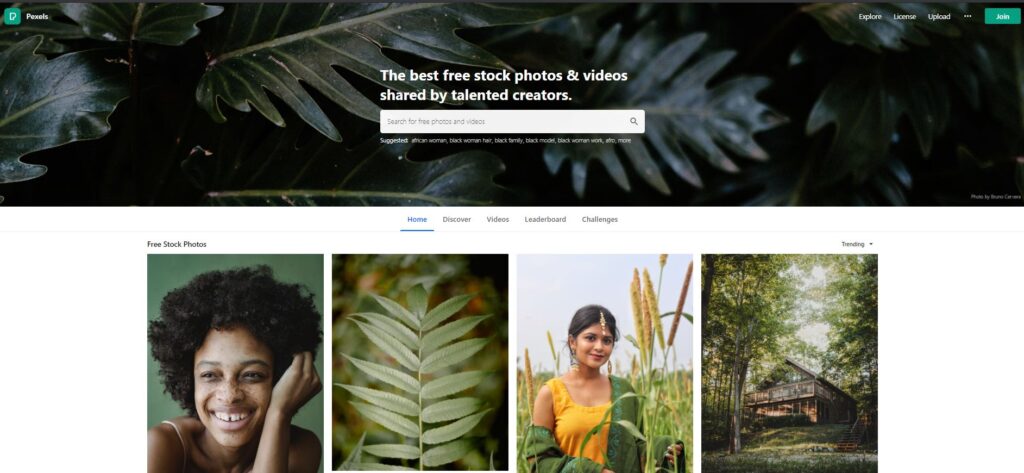
Pexels Photos use two types of licenses: Pexels License and Creative Commons License (CC0). Both types allow the use, editing, and adaptation of photos for commercial use. You may not have to acknowledge the photographer publicly, but it’s still a nice thing to do.
The site is very similar to Google and other search engines. You can download your images without creating an account, but you need to use the other features that Pexels offers. Each page of the photos will explicitly state the license.
Unsplash
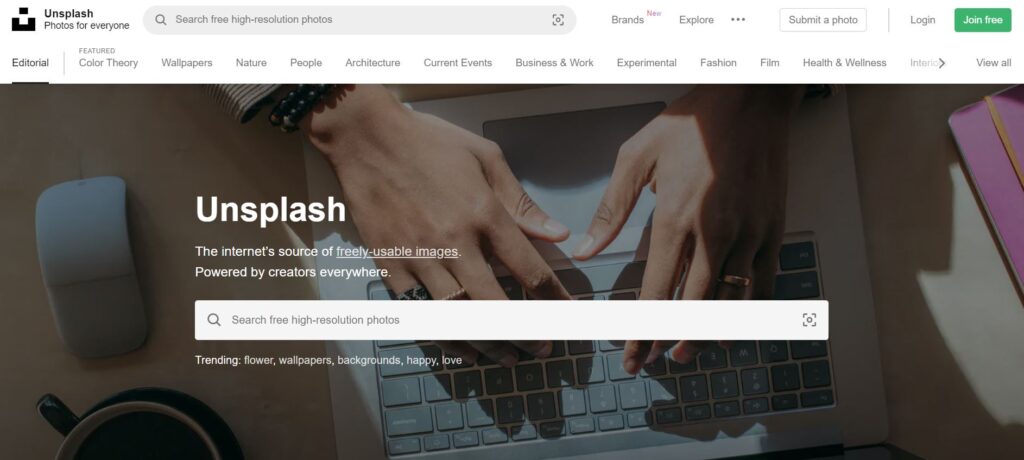
Unsplash has royalty-free CC-0 licensed and public domain photos. It also has a great search feature for theme-based images, such as greenery, skies, portfolios, and more.
It started as a Tumblr blog offering professional leftover shots and become a stand-alone site hosting over million royalty-free stock photos with no charge at all.
Pixabay
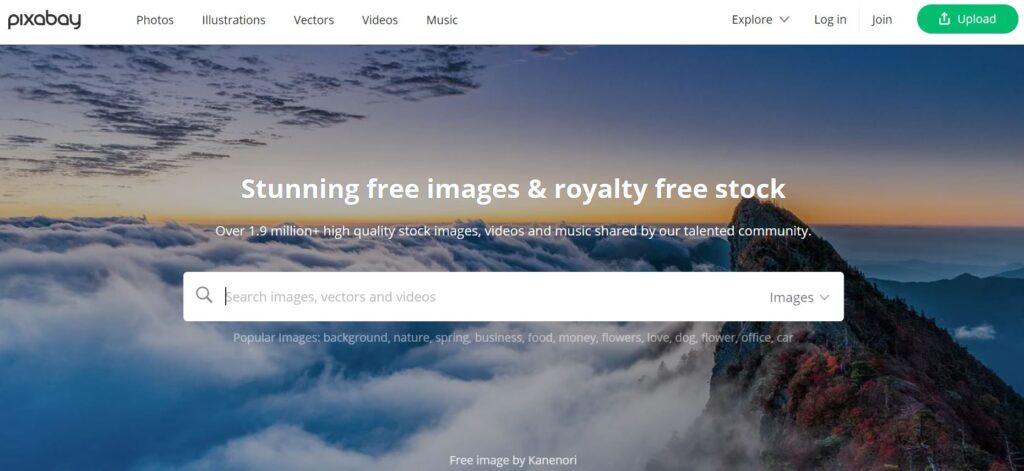
Pixabay images are licensed under Creative Commons Zero (CC0), which means you can use the photos without asking for permission from the artist. The Pixabay platform offers a wide range of images, illustrations, and videos, all of which are free of copyright and are available for use under the Pixabay License. This means that Pixabay is an enormous resource for the free stock of images on the Internet.
Canva
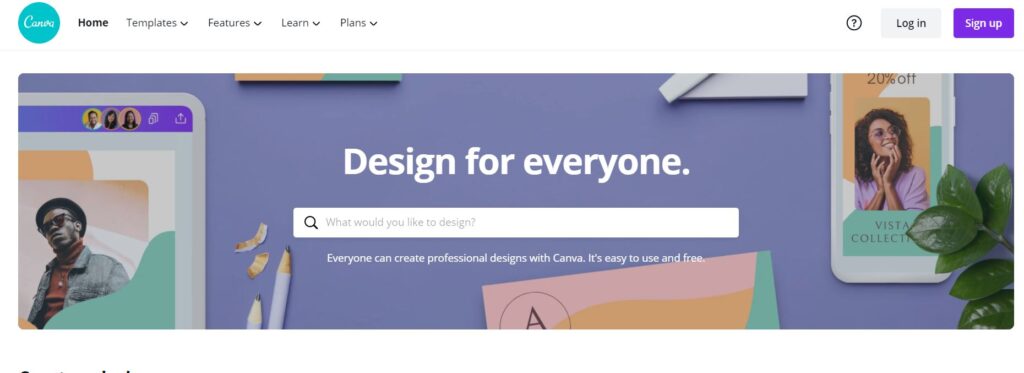
Canva is a popular online graphic design software. You can access more than 75 million photos and videos and a lot of templates to make your images. It’s got a few effects to enhance pictures. They look great, and they look better than many of the ubiquitous free stuff.
StockSnap.io
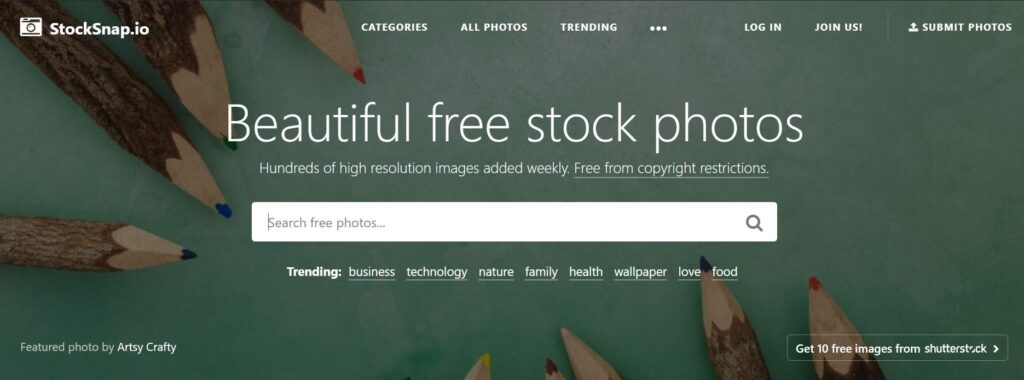
StockSnap.io is an excellent resource if you need bold, fresh-looking photos. You can search for images from the homepage, scroll through the entire gallery, or click on the Categories or Trending pages. It keeps track of image views and downloads, making it easy for you to see which images are currently the most popular.
Gratisography
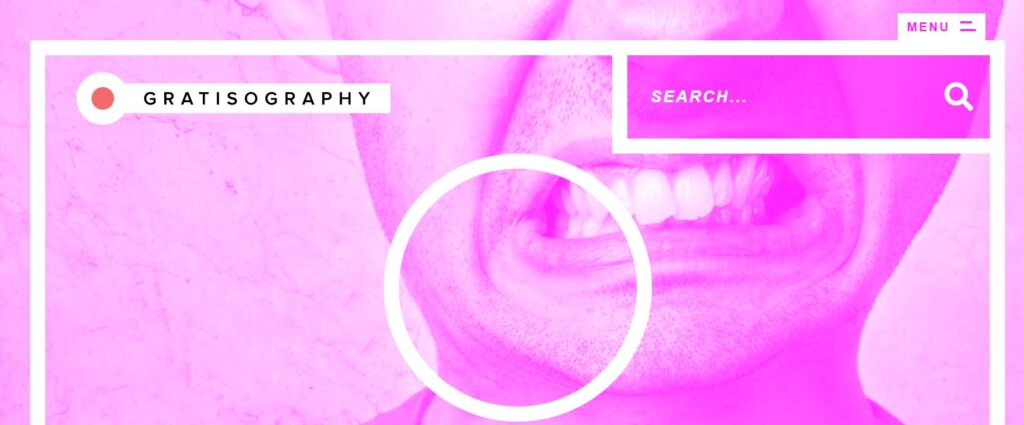
Gratisography is rapidly developing a reputation for being one of the most creative image collections globally by focusing on eye-catching, insular, and arresting photography. For anyone looking to make a significant difference on today’s traffic-jammed digital landscape, having a stock image source like Gratisography is incredibly important.
Unrestricted Stock
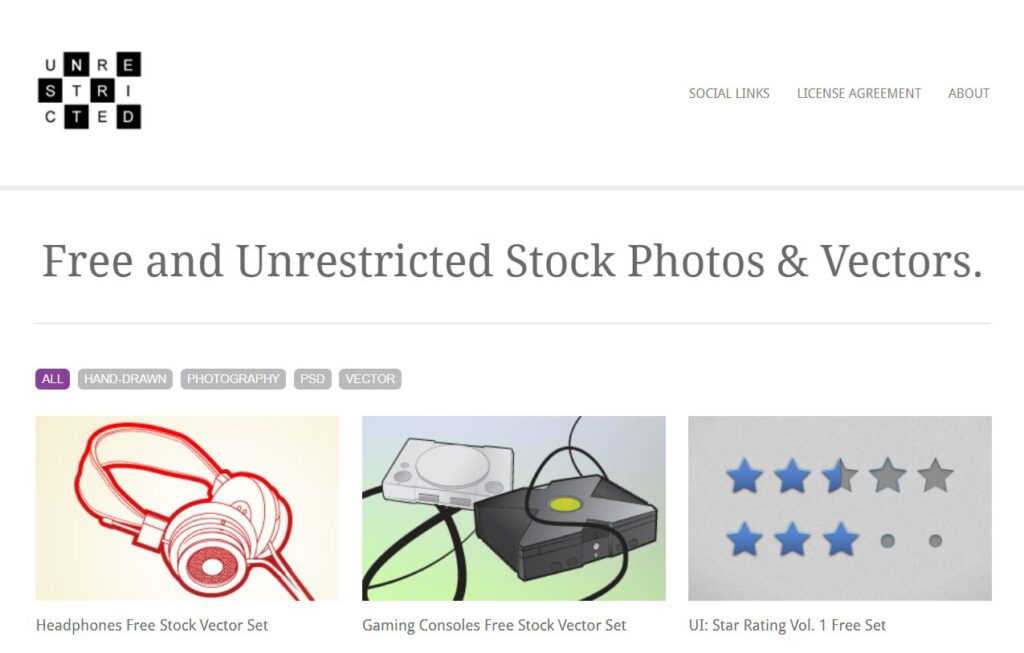
Unrestrictedstock.com provides royalty-free photos, videos, and vectors free of charge. Listed on their website, you can do almost anything about their online collections. The licensing deal has only a few restrictions, which should be checked before using their stock.
Burst by Shopify
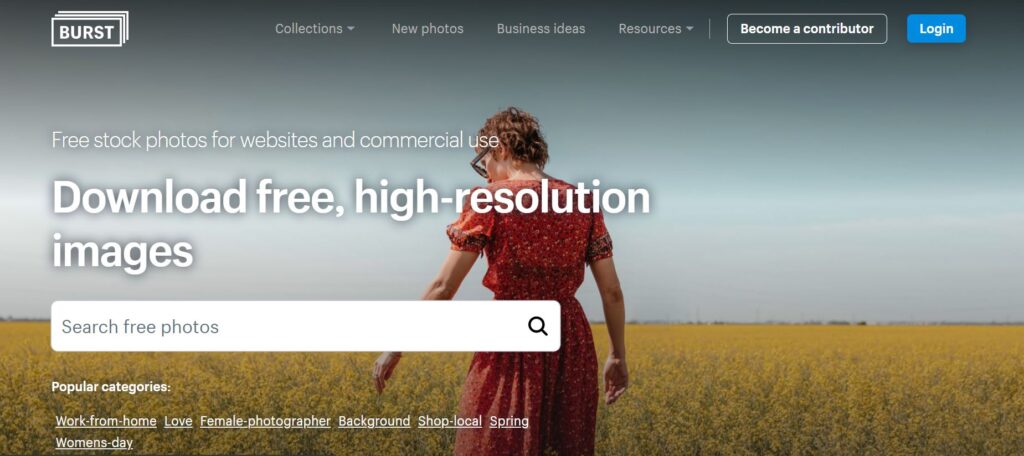
Under the Creative Commons Zero license, Burst offers all images it contains entirely royalty-free for each content tailored to fairly specific uses and audiences. It has a fair amount of very high quality, totally free photos you can use and modify without crediting someone.
Freerange Stock
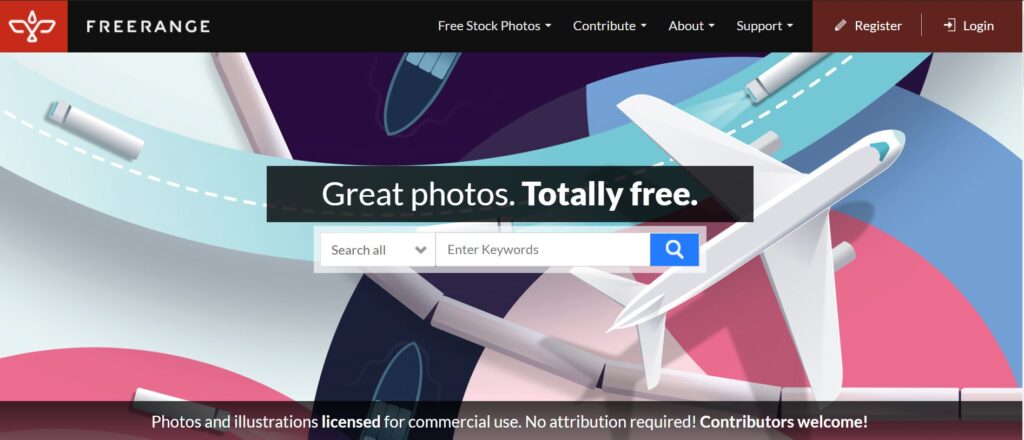
Freerange Stock is a free stock image site with thousands of free photos designed for commercial or noncommercial use. You may use the pictures of their in-house photographer and anything in their archives in return for giving a credit from the website and the photographer’s name.
Picjumbo
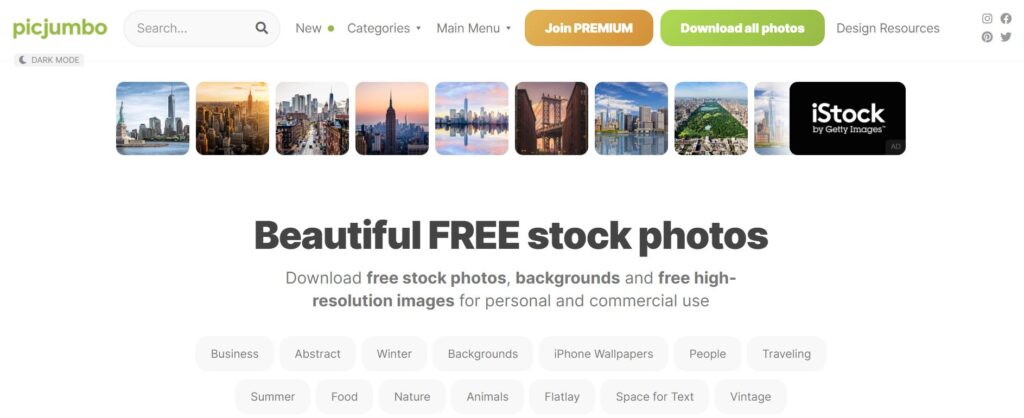
Unlike some of the more extensive image searches, you don’t have to go through a lot of PicJumbo. The photos are free and available for personal or commercial use. You must be aware that some images from this site may also contain copyrighted brands, logos, or private properties.
Why using Google Images could cause serious problems.
Numerous images on Google Images may not have a watermark or price tag; however, that doesn’t suggest they’re up for grabs. All original works of authorship are secured by copyright.
Without a maker’s direct and share approval to utilize a photo or any other imaginative work, the designer is the only individual who can make use of a picture in any manner. If you select to overlook copyright, you do not need to look much to find just how warm the lawful waters can be.
The Internet is filled with tales of websites and blog sites that infringed on copyright and found themselves in court.
Google’s Advanced Image Search
Adhere to these basic actions to discover nobility cost-free pictures utilizing the Google Images advanced search.
Step 1 : Get in a search term in Google Images search.
Step 2: Click the Equipment symbol, then pick Advanced search.
Step 3: Scroll down and use the usage rights fall menu to select free to use or share, even commercially.
Step 4: Click the Advanced Look button.
The photo search engine result will certainly supply you with a massive selection of images to choose from.
Step 5: Simply to be safe, you want to check that the photo is really “complimentary” to use.
Many free devices are free to check to use legal rights, like the TinEye reverse image search, that can help you find additional information or innovative commons usage.
This step is hugely suggested as other webmasters, and blog owners might have removed the copyright and metadata from the image and re-uploaded it without the owner’s approval.
Takeaway
There’s an increasing number of fantastic stock photography resources, and it’s worth adding to your bookmarks. These websites have become a blessing to designers, marketers, and bloggers. It is up to you to decide which picture is most appropriate for your website at the end of the day.
Make sure to figure out where the picture came from, what licensing it falls under, as well as whether you require to associate credit to the owner.
If you’re unclear, do some even more digging or look for an image you understand is up for grabs.
Where are you going to get your free stock images? You can share your favorite website in the comments section below.


